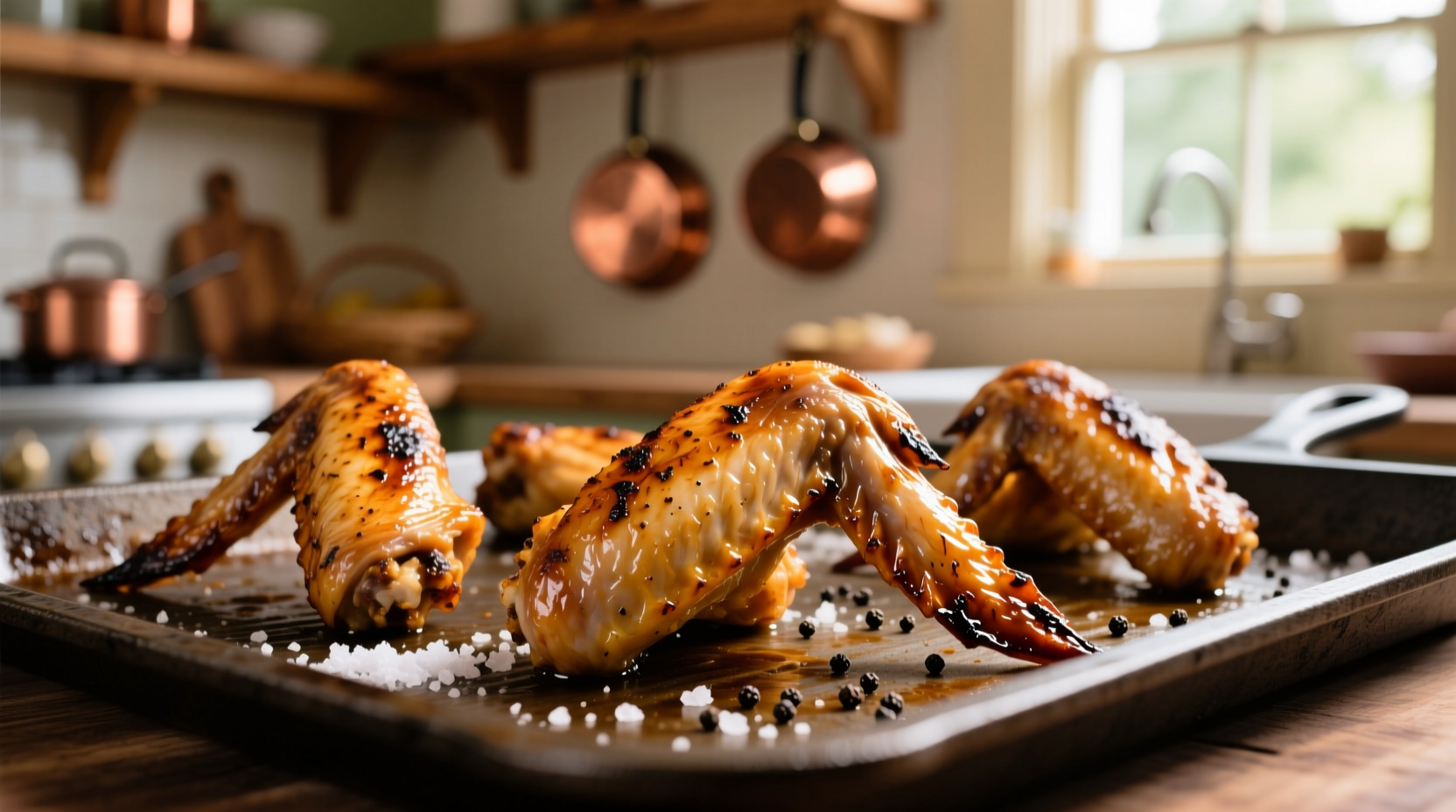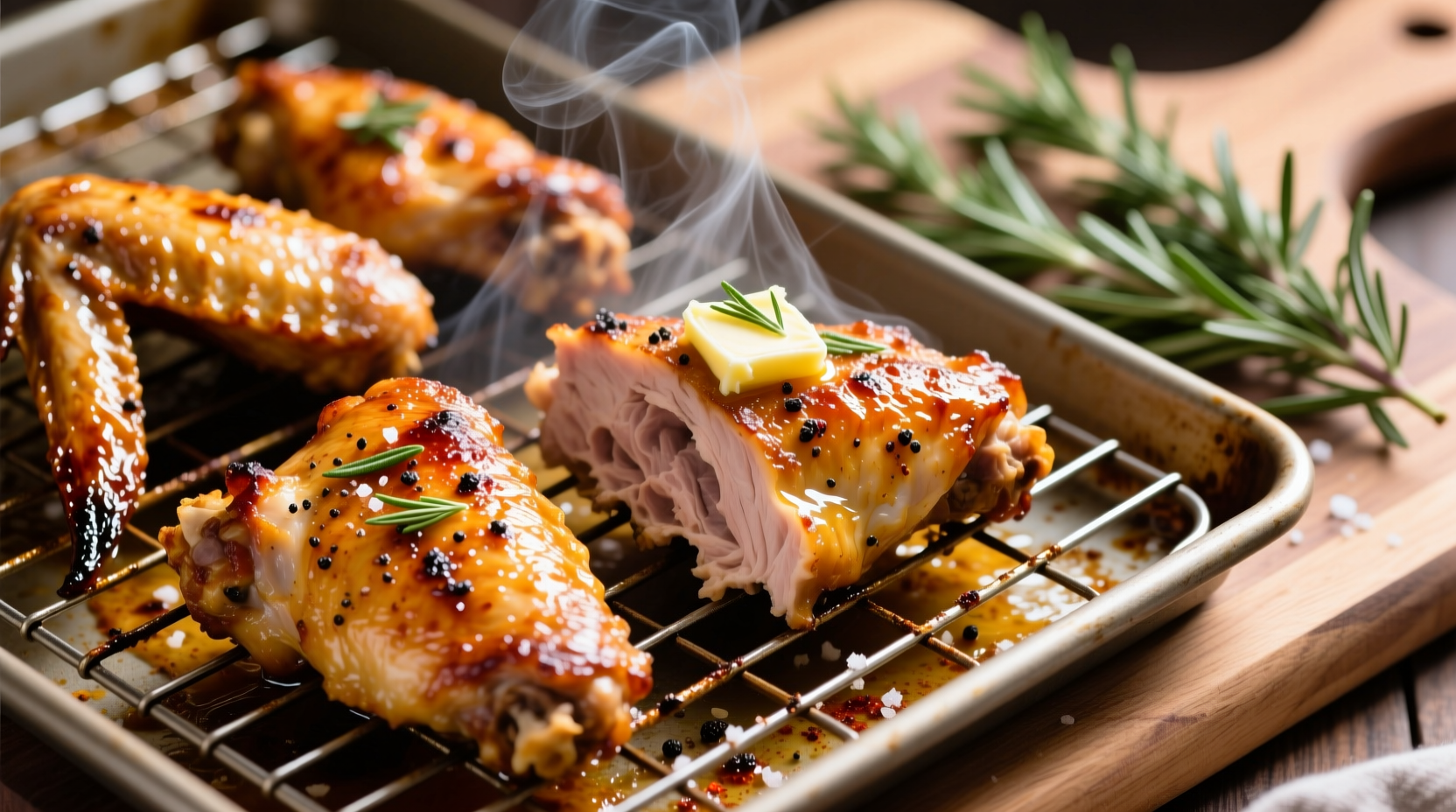Nothing beats perfectly crispy, juicy turkey wings with that ideal balance of golden skin and tender meat. Getting this right depends on precise timing and temperature control. This guide delivers exactly what you need to know to cook turkey wings at 400°F with confidence—no guesswork, no food safety risks, and guaranteed delicious results every time.
The Science Behind Perfect Oven-Cooked Turkey Wings
Cooking turkey wings at 400°F creates the ideal conditions for the Maillard reaction—that magical chemical process responsible for rich browning and complex flavor development. This high heat quickly renders fat while creating that irresistible crispy skin texture home cooks seek. Unlike lower temperatures that can leave wings soggy, 400°F delivers restaurant-quality results in a reasonable timeframe.
According to the USDA Food Safety and Inspection Service, poultry must reach 165°F internal temperature to eliminate harmful bacteria like salmonella. This isn't optional—it's a critical food safety requirement that overrides any visual cues.
Preparation: Setting Up for Success
Proper preparation makes the difference between good and great turkey wings:
- Dry thoroughly with paper towels—moisture is the enemy of crispiness
- Season generously at least 30 minutes before cooking to allow flavors to penetrate
- Arrange properly on a wire rack set over a baking sheet for optimal air circulation
- Leave space between wings—crowding causes steaming instead of crisping
For best results, bring wings to room temperature for 20-30 minutes before cooking. This reduces cooking time variance and promotes even cooking throughout.

Step-by-Step Cooking Process
Follow this precise method for perfect turkey wings every time:
- Preheat oven to exactly 400°F (use an oven thermometer for accuracy)
- Arrange prepared wings on wire rack with space between each piece
- Place rack in center of oven for even heat distribution
- Cook for 20 minutes, then flip wings using tongs
- Continue cooking for another 20-30 minutes
- Check internal temperature in thickest part (avoiding bone)
- If needed, cook in 5-minute increments until reaching 165°F
| Cooking Stage | Time Elapsed | Visual Indicators | Internal Temp |
|---|---|---|---|
| Initial Placement | 0 min | Raw, pale skin | 40°F (refrigerated) |
| First Flip | 20 min | Skin beginning to brown | 120-130°F |
| Near Completion | 40 min | Golden brown, crispy skin | 150-160°F |
| Done | 40-50 min | Deep golden, pulls easily from bone | 165°F |
Troubleshooting Common Issues
Even with precise timing, variables can affect results. Here's how to handle common problems:
Wings Browning Too Quickly
If skin is darkening faster than internal temperature rises:
- Reduce oven temperature to 375°F
- Loosely tent with foil to slow browning
- Move pan to lower oven rack position
Uneven Cooking
For consistent results:
- Flip wings at 20-minute mark
- Rotate baking sheet 180 degrees halfway through
- Arrange larger wings toward oven's outer edges
Not Crispy Enough
For extra-crispy skin:
- Pat wings completely dry before seasoning
- Sprinkle with 1/2 teaspoon baking powder per pound (creates alkaline surface)
- Finish under broiler for 2-3 minutes (watch closely!)
Serving and Storage Tips
Let wings rest for 5-10 minutes after cooking—this allows juices to redistribute for maximum tenderness. Serve with your favorite dipping sauces like blue cheese, ranch, or a tangy buffalo sauce.
For storage, place cooled wings in airtight containers within 2 hours of cooking. They'll keep refrigerated for 3-4 days. To reheat:
- Oven method: 375°F for 10-15 minutes on wire rack
- Air fryer: 350°F for 5-8 minutes
- Avoid microwaving—it makes skin soggy
Why Timing Varies: Understanding Cooking Variables
The 40-50 minute guideline assumes standard conditions, but several factors affect actual cooking time:
- Wing size—larger wings may need up to 55 minutes
- Starting temperature—refrigerated vs. room temperature
- Oven accuracy—many ovens run hotter or cooler than set
- Pan type—dark pans cook faster than light-colored ones
- Rack position—center rack provides most even heat
This is why a meat thermometer is non-negotiable—it's the only reliable way to determine doneness regardless of timing variables. The USDA Meat and Poultry Thermometer Guide confirms that visual cues alone cannot guarantee food safety.
Perfect Pairings for Your Turkey Wings
Complement your perfectly cooked wings with these classic sides:
- Creamy coleslaw (cuts through richness)
- Buttery cornbread (soaks up delicious juices)
- Crunchy celery sticks (refreshing contrast)
- Simple green salad (lightens the meal)
For flavor variations, try these seasoning approaches:
- Buffalo style—toss in hot sauce and melted butter after cooking
- Dry rub—combine paprika, garlic powder, onion powder, and cayenne
- Lemon-herb—fresh rosemary, thyme, lemon zest, and black pepper
- Asian-inspired—soy sauce, ginger, garlic, and sesame oil











 浙公网安备
33010002000092号
浙公网安备
33010002000092号 浙B2-20120091-4
浙B2-20120091-4